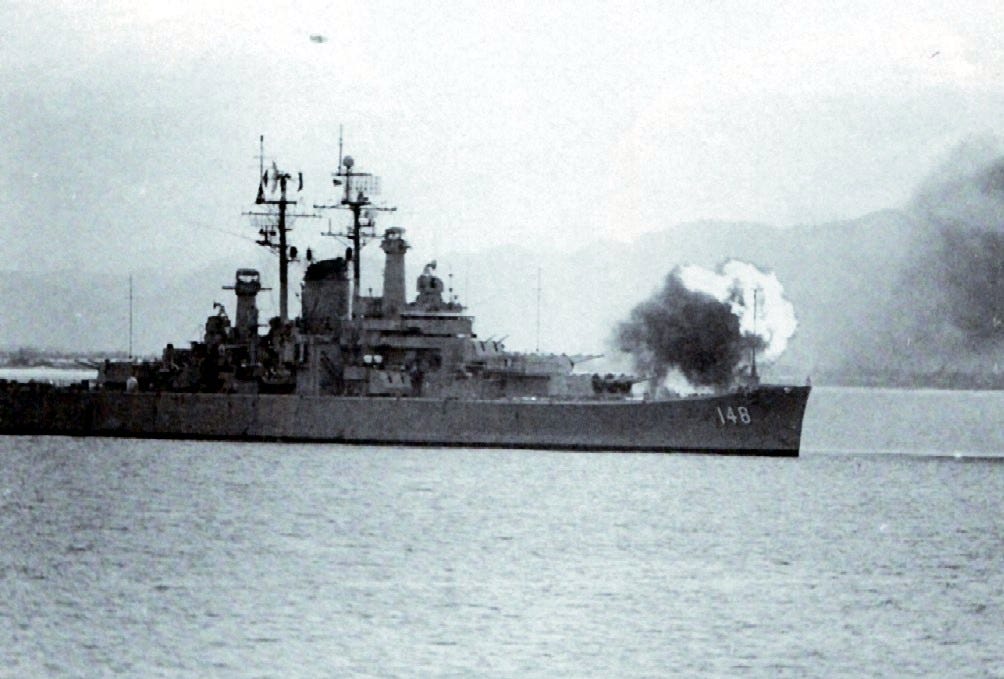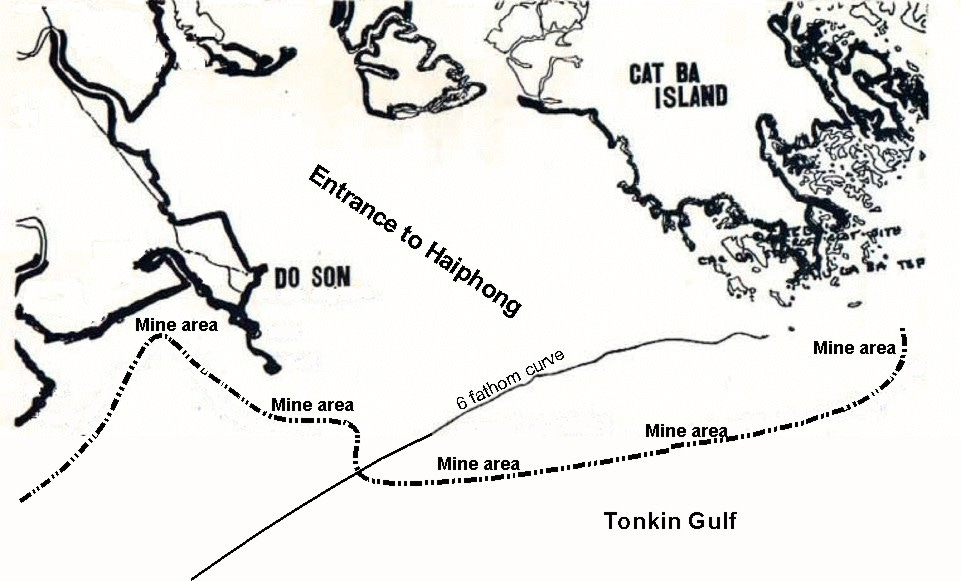I think it is time for an encore to our four-part series we ended last week re-visiting the naval gun battles of the Vietnam War with one more telling. I ran into this while researching the other four and you need to give it a read.
It is such a shame that in our national rush to forget so much of the Vietnam War after the fall of Saigon that our Navy joined the rush and as a result, especially for our surface force, we memory-holed some of the most audacious courage and well-executed missions since the great battles in WWII.
The larger story is well told by George Trowbridge. You owe it to yourself to read the whole thing, but here is a taste of the Hairy Navy leaving the Vietnam War in style.
President Nixon’s orders required the U.S. Navy’s 7th Fleet to put together two joint-operations. The task of one operation would be the aerial seeding of mines at the approaches and channel into Haiphong Harbor; the task of the second operation would be to suppress gunfire from the North Vietnamese shore batteries located principally on Cat Ba Island and along the Do Son Peninsula. The two operations were called “Operation Pocket Money” and “Operation Custom Tailor.”
“Operation Pocket Money.” An aerial mining campaign conducted by U.S. Navy Task Force 77 against North Vietnam on May 9, 1972 (Vietnam time). The purpose was to halt or slow the transportation of supplies and materials for the Nguyen Hue Offensive or Easter Offensive, an invasion of the Republic of Vietnam (South Vietnam), by forces of the People’s Army of Vietnam (PAVN), launched on March 30. Pocket Money was the first use of naval mines against North Vietnam. Three A-6 Intruders carried 1,000-pound (450 kg) Mark 52 magnetic mines to be dropped in Haiphong’s inner channel; all Mark 52-2 mines were set with 72-hour arming delays, in order to permit merchant ships time for departure or a change in destination consistent with the President’s public warning. Six Navy A-7 Corsair IIs carried 500-pound (230 kg) Mark 36 acoustic mines that were dropped in the outer portion of the channel. Each plane carried four mines.3
To support Task Force 77 (Operation Pocket Money), at daylight on May 9, Task Unit 77.1.2 a destroyer strike force struck the Haiphong Harbor air defense batteries with a 30-minute bombardment from their 5-inch (127mm) guns, which preceded the aerial mining. The strike force consisted of USS Richard S. Edwards (DD 950), USS Berkeley (DDG 15), USS Buchanan (DDG 14) and USS Myles C. Fox (DD 829). 3
Additionally, guided missile cruisers USS Long Beach (CGN 9) and USS Chicago (CG-11) had been moved north from the PIRAZ2 station off Hon Mat to within 40 miles of Haiphong to protect aircraft mining Haiphong Harbor at low altitude. These cruisers patrolling offshore were given a free-fire zone for their Talos missiles to engage defending MiG fighters approaching the coast from near Hanoi. Chicago set general quarters at 0840, and within minutes launched two RIM-8 Talos missiles at two MiGs in a holding pattern awaiting air control vectors on the approaching A-6 Intruders and A-7 Corsairs. One MiG was reported destroyed. 3
“Operation Custom Tailor.” Early on May 10, another strike force, which was a cruiser/destroyer strike force conducted another daring raid on Haiphong, to suppress hostile shore gun batteries to also enable the ongoing aerial mining by Task Force 77’s aircraft. Between the two operations, it was a history-making strike that involved the most formidable cruiser/destroyer fleet in the Western Pacific since World War II. During the strike, military targets within four miles of Haiphong were hit and enemy opposition initially was heavy.
The ships now making up TU 77.1.2 were two Gearing class destroyers USS Hanson (DD 832) and USS Myles C. Fox (DD 829); a guided missile destroyer USS Buchanan (DDG 14); an 8-inch cruiser USS Newport News (CA 148); two 6-inch gun missile cruisers USS Providence (CLG 6) and USS Oklahoma City (CLG 5).
…
At 0345, all five warships turned to the firing course 240 degrees (True), roughly parallel to the longitudinal axis of the airfield on Cat Ba Island. At the extreme range of Newport News’s 8-inch guns, the Cat Ba military complexes were the raid’s primary targets. The completely darkened warships commenced firing together at 0347.4

Seventy-seven massive 8-inch rounds and 40, 5-inch rounds from Newport News slammed into the military installations around Cat Ba. Meanwhile hundreds of rounds were fired from the two light cruiser’s 6-inch guns as Hanson’s 5-inch/38 caliber and Buchanan’s 5-inch/54 caliber guns pounded on enemy targets along the Do Son Peninsula. Hanson’s gunfire is credited with suppressing the enemy shore batteries, allowing the cruisers to concentrate their fire on assigned targets
That’s enough to get you interested…now read the rest of the story.
Fullbore.





Learn something new every day.
https://www.colorado.edu/today/2018/11/12/1972-solar-storm-triggered-vietnam-war-mystery
A 1972 solar storm triggered a Vietnam War mystery
Sal! Great FBF post! Steady as she goes!